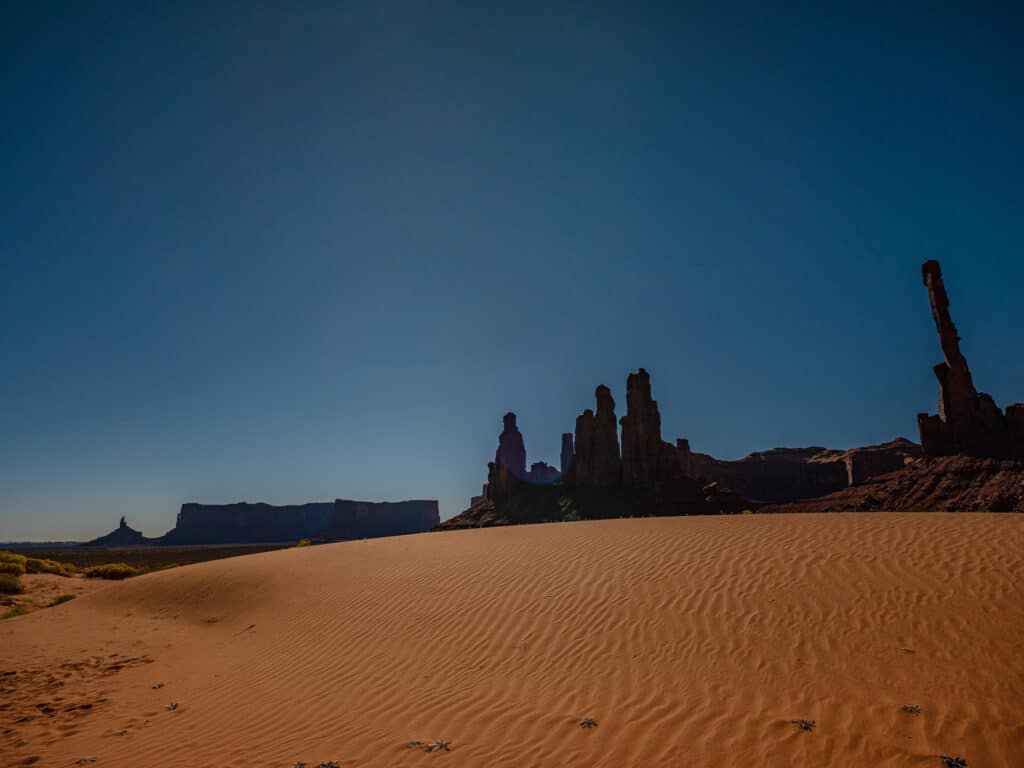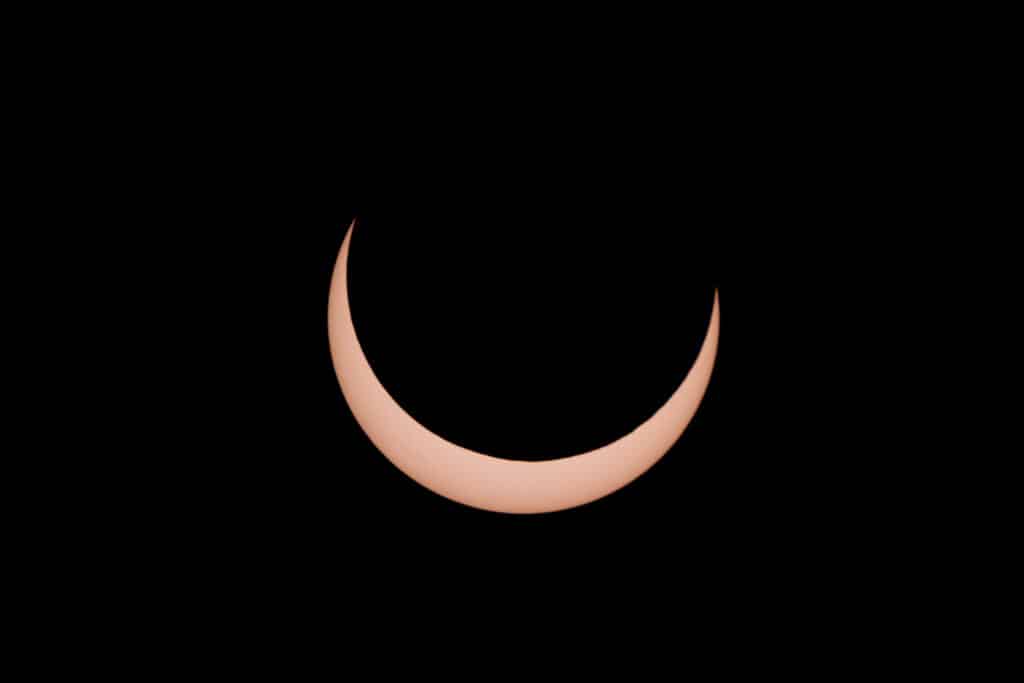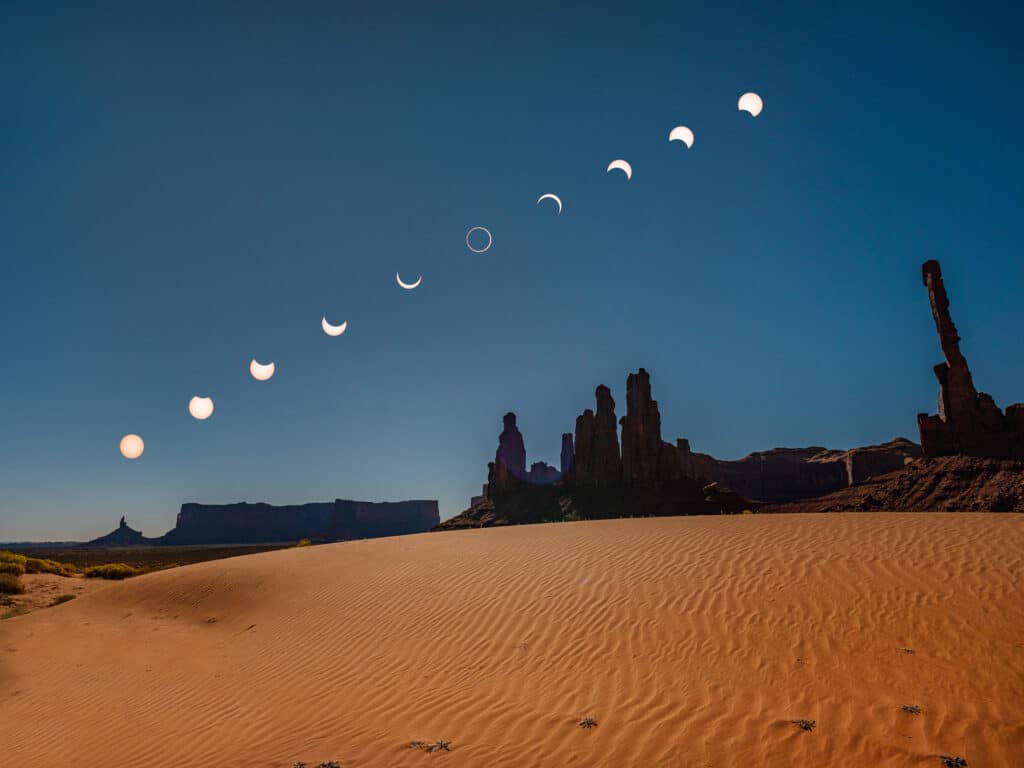This is the third and final segment of how I photographed the eclipse. In this segment I will explain how a created the above composite image.
During the eclipse I had two cameras photographing. One with a long lens to create the close ups of the eclipsed sun and one with a wide angle photographing the scene during the eclipse. One of the functions of the wide angle shots was to document the path of the sun across the scene.
When the eclipse was at totality I removed the eclipse filter on the wide angle lens and made a few photos of the overall scene. Here is one of those images

Importing the image into Photoshop I removed the sun and evened out the tonality of the sky

I then selected 10 images of the close-up of the sun depicting regular intervals of the eclipse. The image below shows one of the close ups.

I cropped all of these images equally. With some experimentation I determined the pixel size of the overall image so when I pasted them into the wide angle background they looked “believable”. The resulting size of these sun images is somewhat arbitrary. It is larger than the actual sun size in the original image but not so large that the overall composite looks fake. I then used a selection tool to grab only the sun portion of each close up of the sun. I copied this content and pasted it as a layer into the background of the overall wide angle view. I carefully aligned these layers to replicate the path of the eclipse.

Once I had everything in place I flattened the image to remove the layers and saved it in the final format.

On the wide angle image we were fortunate to have arranged a back-country tour of Monument Valley. What this meant was we had an awesome setting to view and photograph the eclipse. It also meant that other than another group of photographers which were set up some 200 yards away we were all by ourselves, and that made the event even more special and intimate.
The wide angle shot establishes the context of the eclipse and provides a backdrop to place the close up images. I took some photographs of the scene at the very beginning with out a solar filter on. I then placed the solar filter and set the camera for an overall exposure pretty close the equivalent of the close up camera. What this meant was that the resulting images with the solar filter in place only recorded the sun as a dot in a field of black. That is fine as really all these images do is to record the path of the sun and the eclipse through the sky. During the total portion of the eclipse I removed the solar filter and made a couple of exposures of the scene with the sun in total eclipse phase. As this was an annular eclipse there was still a fair amount of light on the scene. I bracketed these exposures. Afterwards I replaced the solar filter and let the camera’s intervalometer finish the sequence of picture taking.
During most of the eclipse we were standing around with little to do other than adjust framing occasionally and tell stories. It was a very pleasant experience and we got to listen to stories from our guides who had grown up in Monument Valley. When the eclipse was over we collected our gear and I knew that the work of creating photographs of the eclipse was only partly done.

